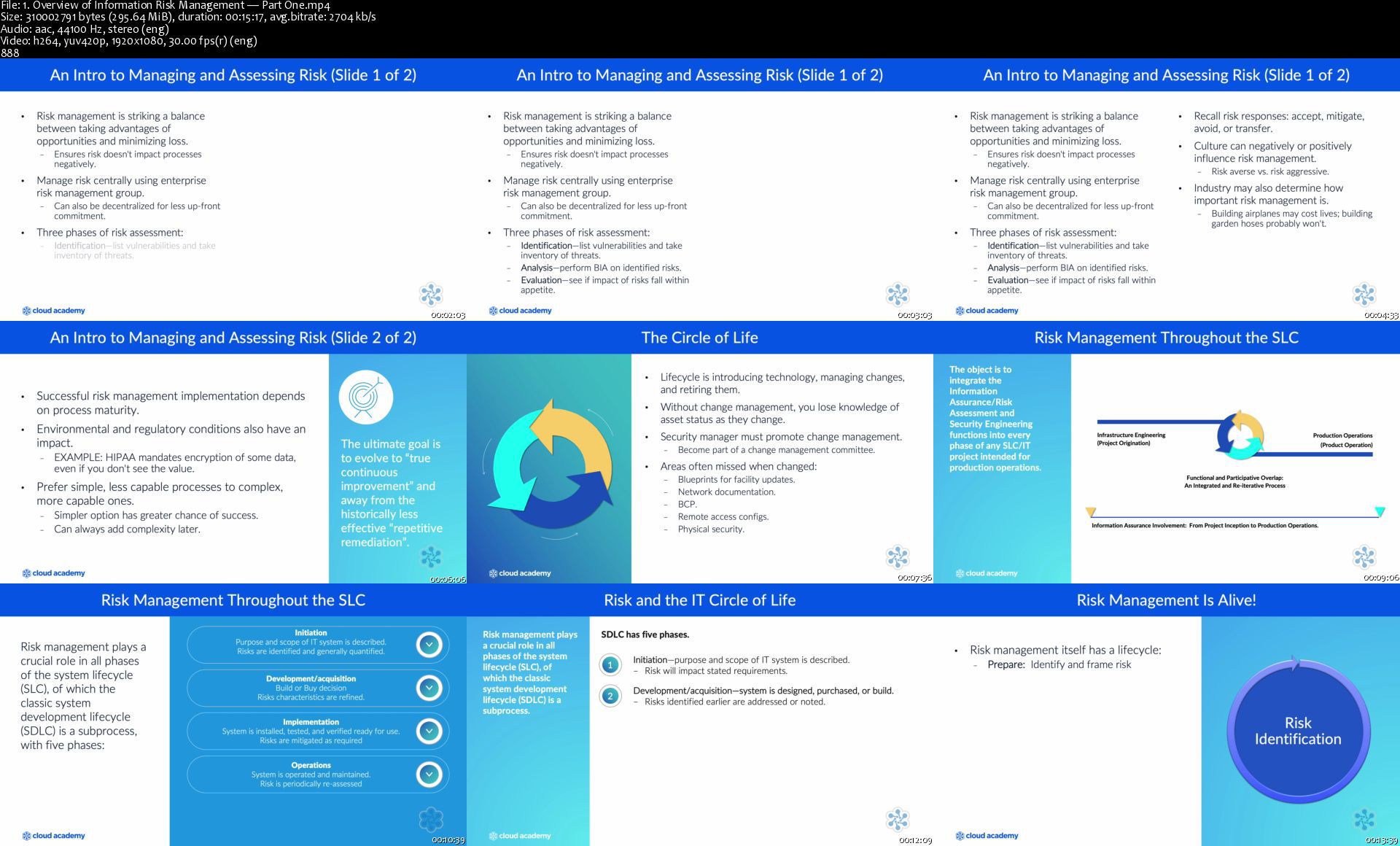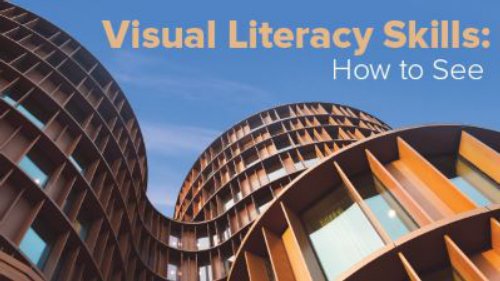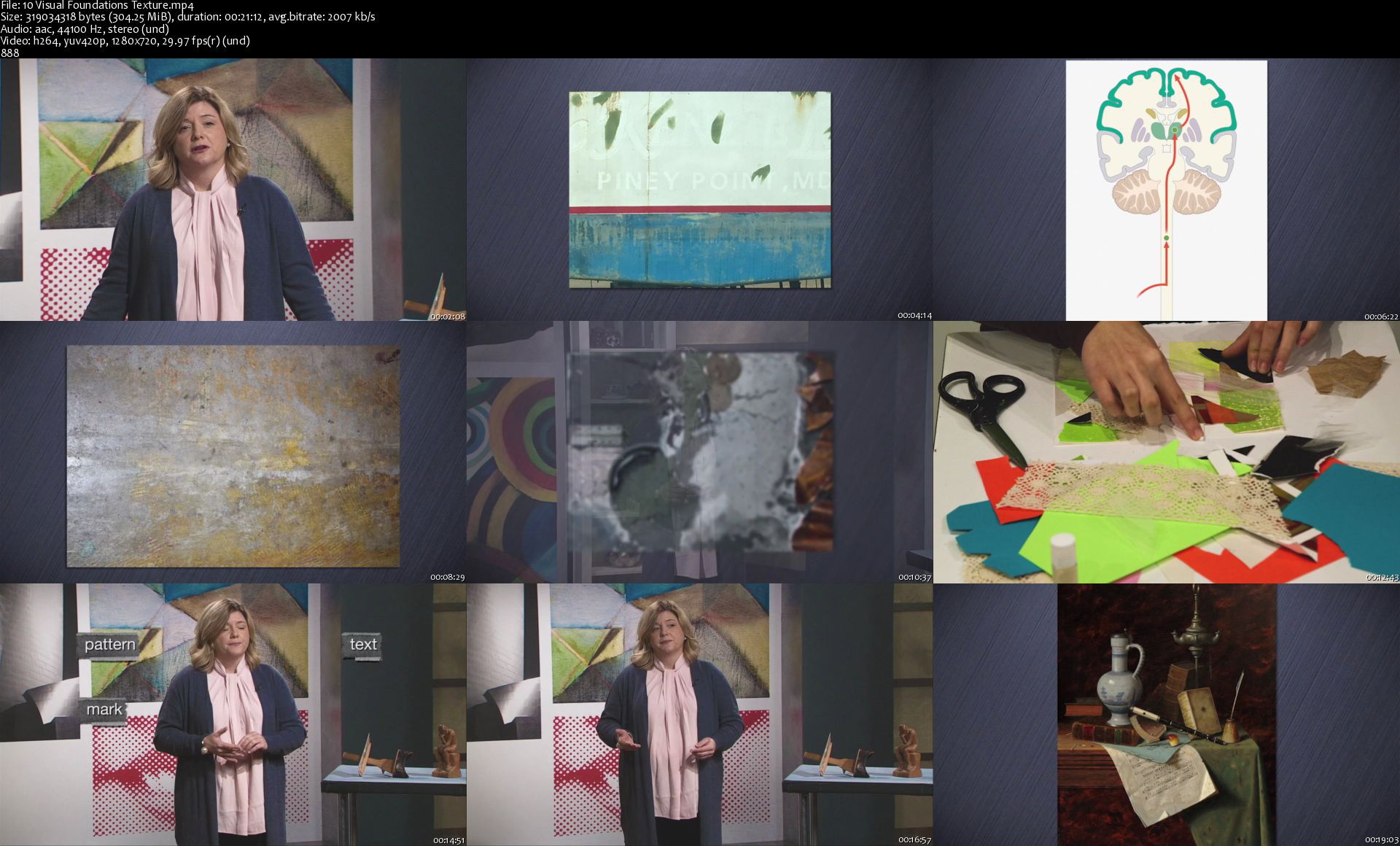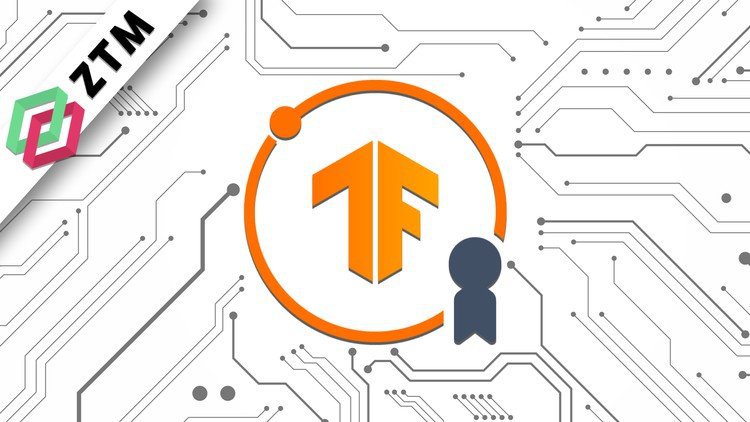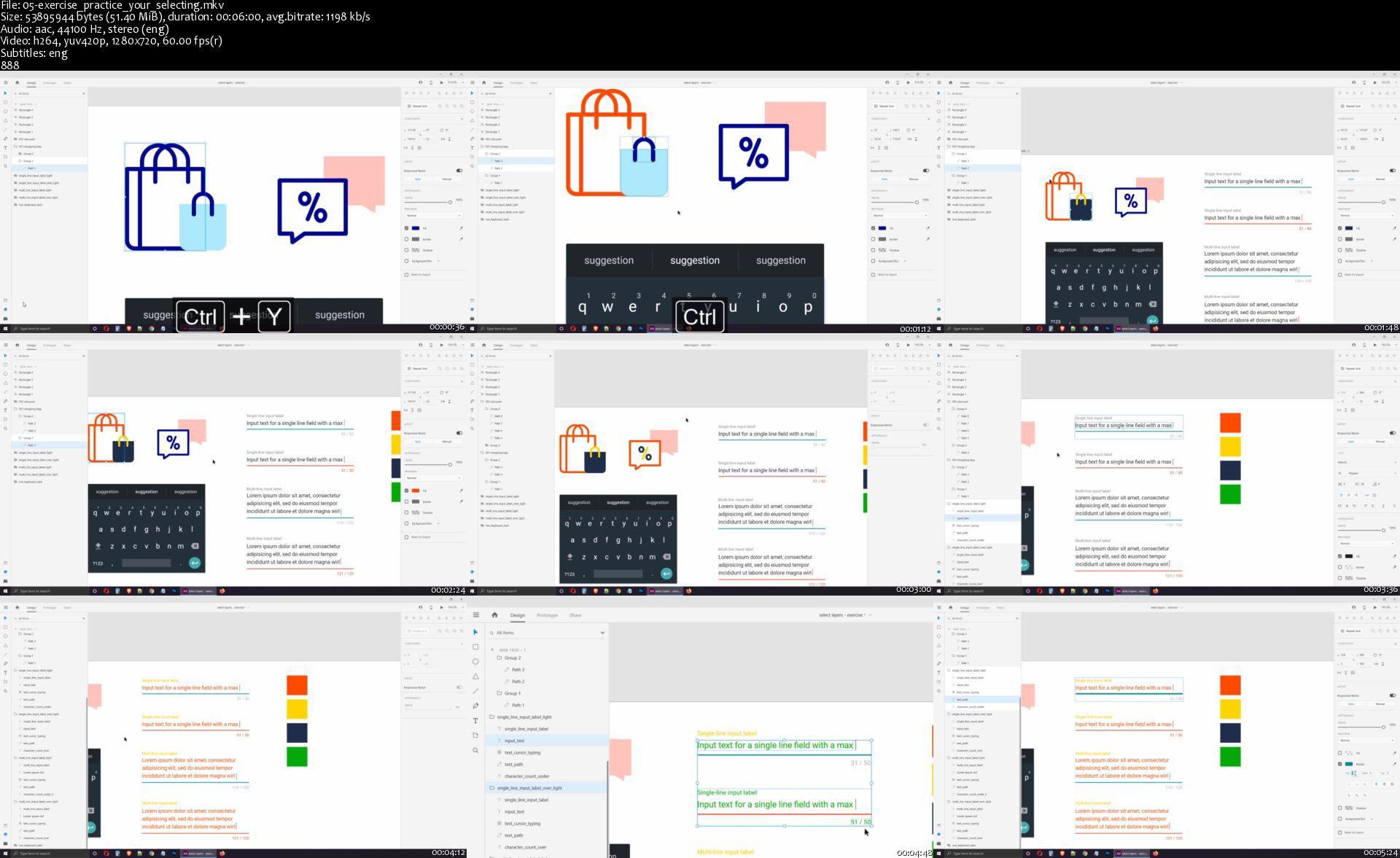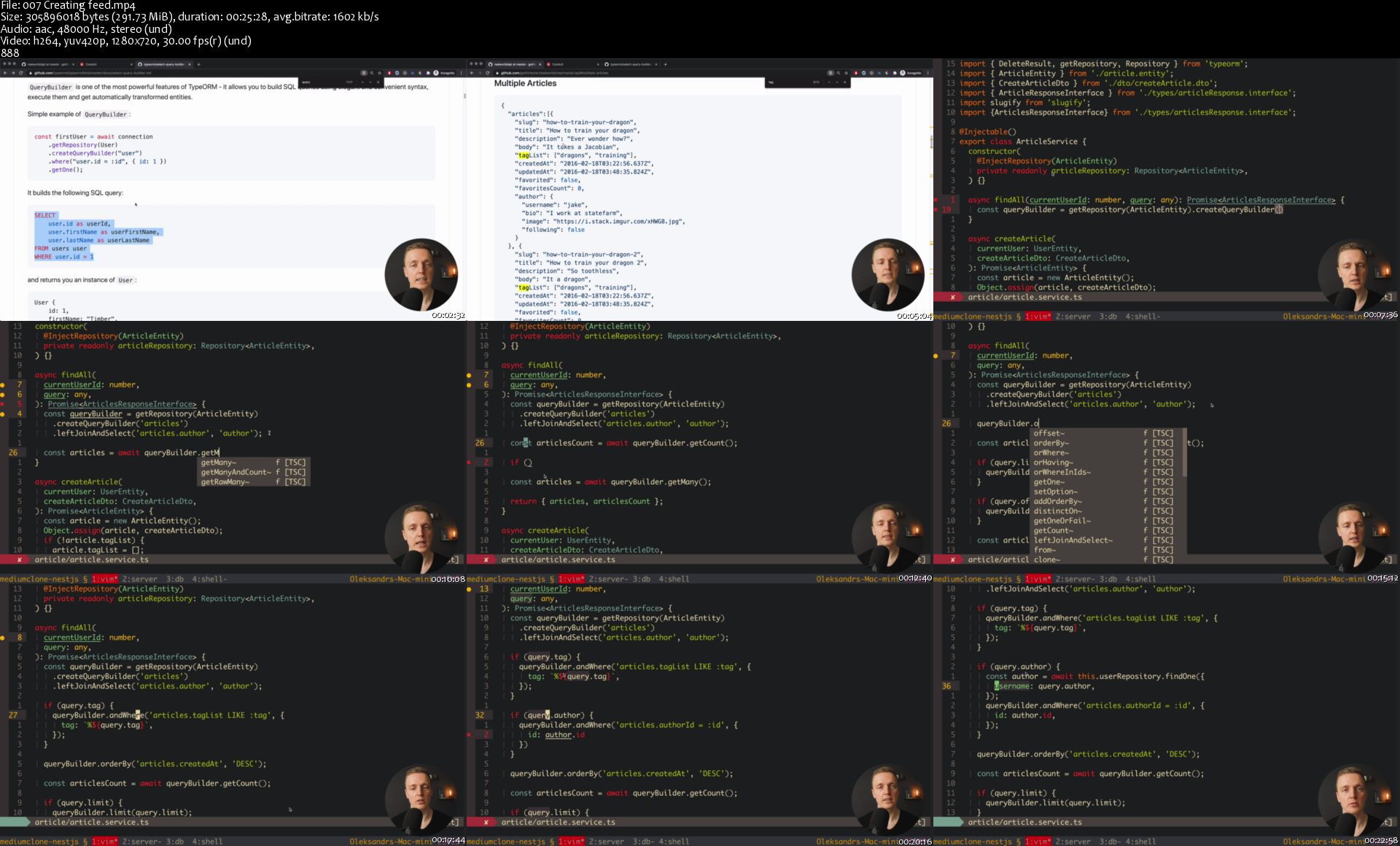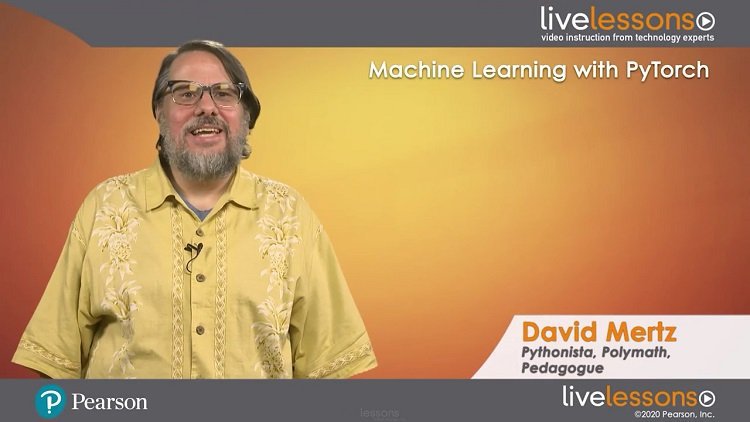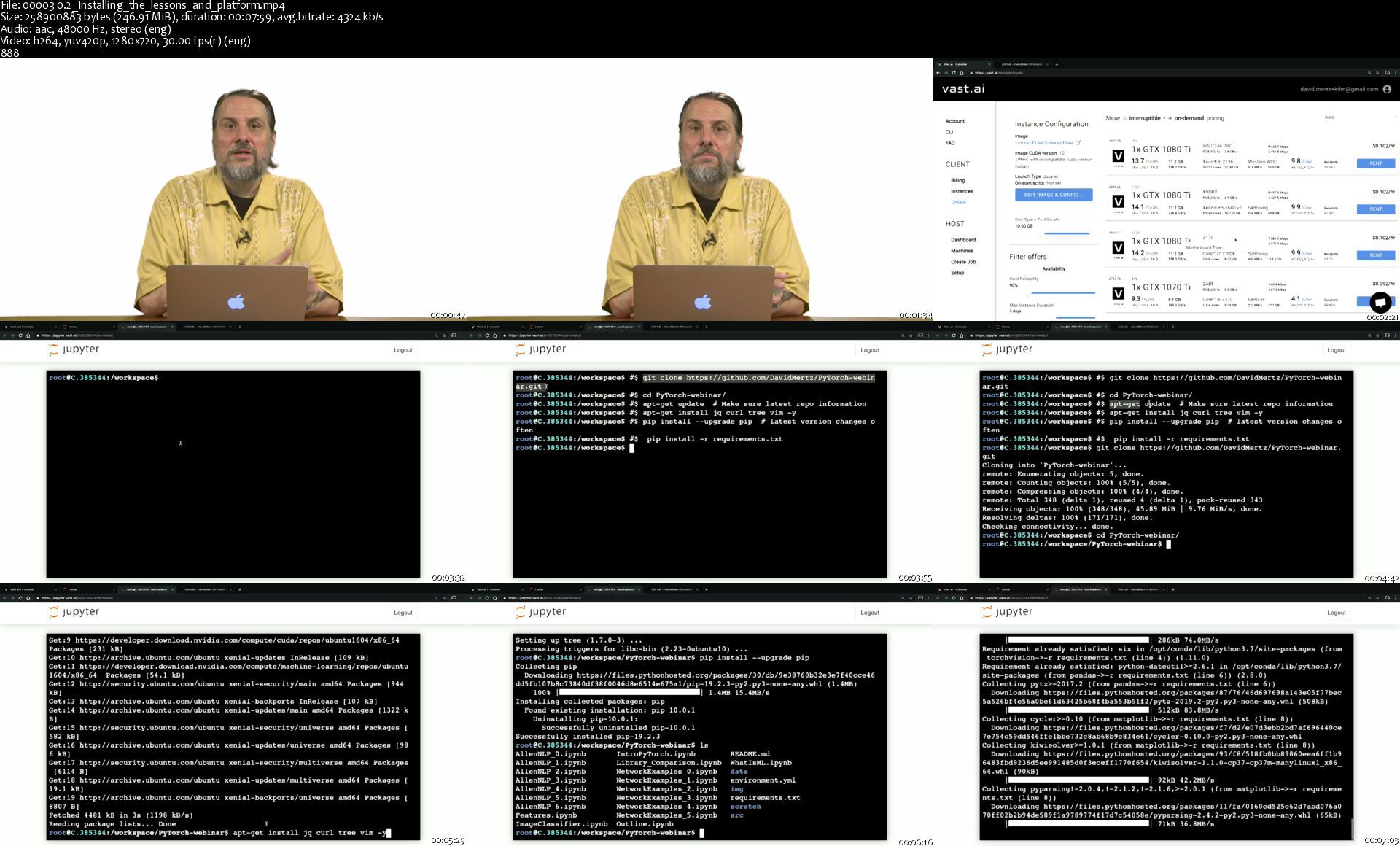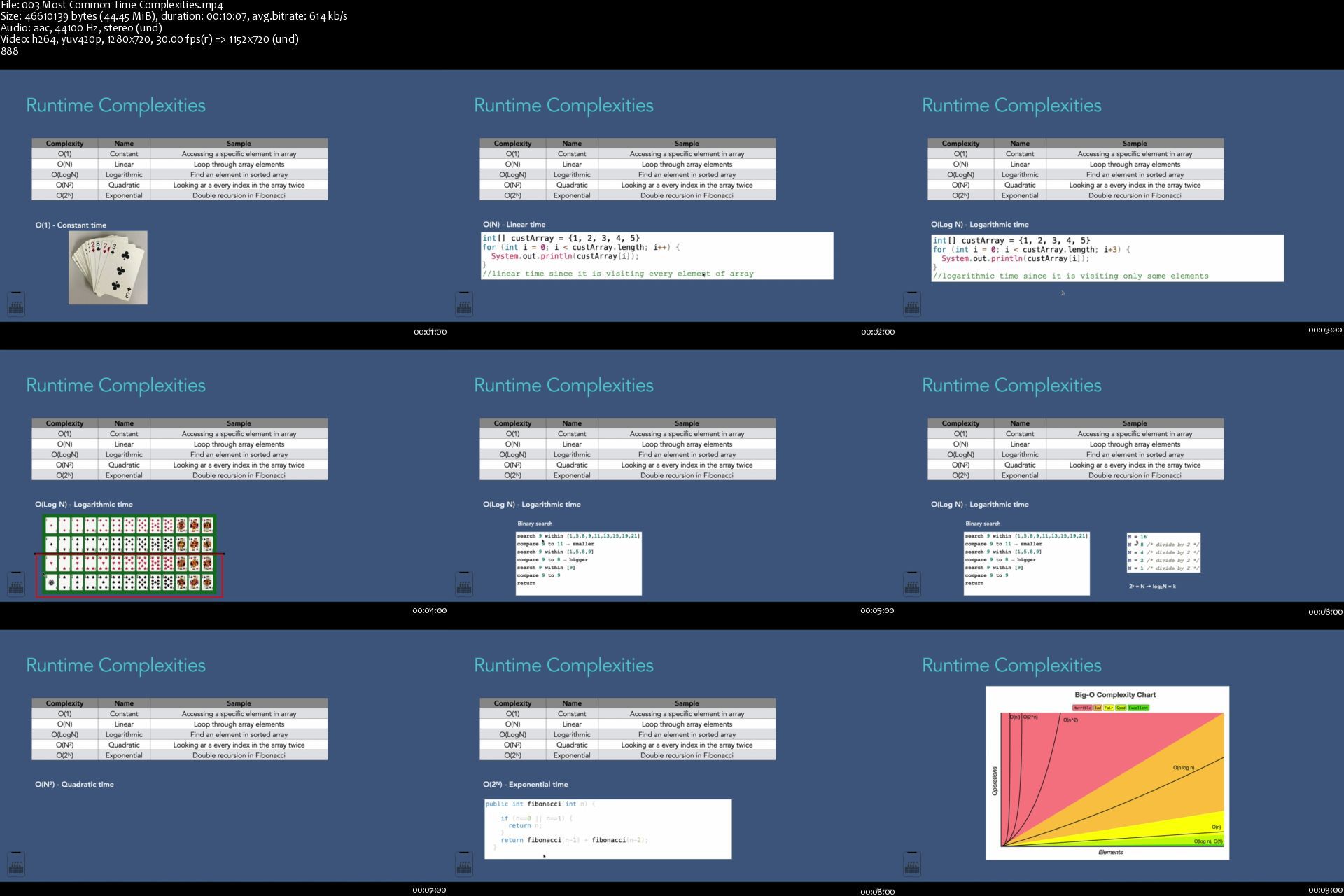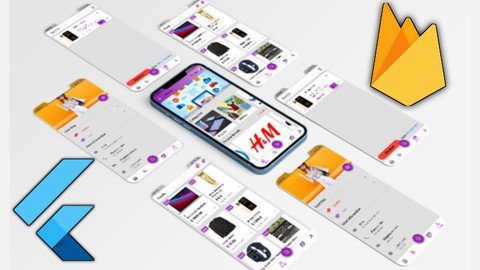Java Data Structures and Algorithms Masterclass
Java Data Structures and Algorithms Masterclass
MP4 | Video: h264, 1280x720 | Audio: AAC, 44.1 KHz, 2 Ch
Genre: eLearning | Language: English + srt | Duration: 385 lectures (44h 42m) | Size: 10.2 GB
Data Structures and Algorithms from Zero to Hero and Crack Top Companies 100+ Interview questions (Java Coding)
What you'll learn:
Learn, implement, and use different Data Structures
Learn, implement and use different Algorithms
Become a better developer by mastering computer science fundamentals
Learn everything you need to ace difficult coding interviews
Cracking the Coding Interview with 100+ questions with explanations
Time and Space Complexity of Data Structures and Algorithms
Recursion
Big O
Dynamic Programming
Divide and Conquer Algorithms
Graph Algorithms
Greedy Algorithms
Requirements
Basic Java Programming skills
Description
Welcome to the Java Data Structures and Algorithms Masterclass, the most modern, and the most complete Data Structures and Algorithms in Java course on the internet.
At 44+ hours, this is the most comprehensive course online to help you ace your coding interviews and learn about Data Structures and Algorithms in Java. You will see 100+ Interview Questions done at the top technology companies such as Apple,Amazon, Google and Microsoft and how to face Interviews with comprehensive visual explanatory video materials which will bring you closer towards landing the tech job of your dreams!
Learning Java is one of the fastest ways to improve your career prospects as it is one of the most in demand tech skills! This course will help you in better understanding every detail of Data Structures and how algorithms are implemented in high level programming language.
We'll take you step-by-step through engaging video tutorials and teach you everything you need to succeed as a professional programmer.
After finishing this course, you will be able to:
Learn basic algorithmic techniques such as greedy algorithms, binary search, sorting and dynamic programming to solve programming challenges.
Learn the strengths and weaknesses of a variety of data structures, so you can choose the best data structure for your data and applications
Learn many of the algorithms commonly used to sort data, so your applications will perform efficiently when sorting large datasets
Learn how to apply graph and string algorithms to solve real-world challenges: finding shortest paths on huge maps and assembling genomes from millions of pieces.
Why this course is so special and different from any other resource available online?
This course will take you from very beginning to a very complex and advanced topics in understanding Data Structures and Algorithms!
You will get video lectures explaining concepts clearly with comprehensive visual explanations throughout the course.
You will also see Interview Questions done at the top technology companies such as Apple,Amazon, Google and Microsoft.
I cover everything you need to know about technical interview process!
So whether you are interested in learning the top programming language in the world in-depth and interested in learning the fundamental Algorithms, Data Structures and performance analysis that make up the core foundational skillset of every accomplished programmer/designer or software architect and is excited to ace your next technical interview this is the course for you!
And this is what you get by signing up today:
Lifetime access to 44+ hours of HD quality videos. No monthly subscription. Learn at your own pace, whenever you want
Friendly and fast support in the course Q&A whenever you have questions or get stuck
FULL money back guarantee for 30 days!
This course is designed to help you to achieve your career goals. Whether you are looking to get more into Data Structures and Algorithms , increase your earning potential or just want a job with more freedom, this is the right course for you!
The topics that are covered in this course.
Section 1 - Introduction
What are Data Structures?
What is an algorithm?
Why are Data Structures and Algorithms important?
Types of Data Structures
Types of Algorithms
Section 2 - Recursion
What is Recursion?
Why do we need recursion?
How Recursion works?
Recursive vs Iterative Solutions
When to use/avoid Recursion?
How to write Recursion in 3 steps?
How to find Fibonacci numbers using Recursion?
Section 3 - Cracking Recursion Interview Questions
Question 1 - Sum of Digits
Question 2 - Power
Question 3 - Greatest Common Divisor
Question 4 - Decimal To Binary
Section 4 - Bonus CHALLENGING Recursion Problems (Exercises)
power
factorial
productofArray
recursiveRange
fib
reverse
isPalindrome
someRecursive
flatten
captalizeFirst
nestedEvenSum
capitalizeWords
stringifyNumbers
collectStrings
Section 5 - Big O Notation
Analogy and Time Complexity
Big O, Big Theta and Big Omega
Time complexity examples
Space Complexity
Drop the Constants and the non dominant terms
Add vs Multiply
How to measure the codes using Big O?
How to find time complexity for Recursive calls?
How to measure Recursive Algorithms that make multiple calls?
Section 6 - Top 10 Big O Interview Questions (Amazon, Facebook, Apple and Microsoft)
Product and Sum
Print Pairs
Print Unordered Pairs
Print Unordered Pairs 2 Arrays
Print Unordered Pairs 2 Arrays 100000 Units
Reverse
O(N) Equivalents
Factorial Complexity
Fibonacci Complexity
Powers of 2
Section 7 - Arrays
What is an Array?
Types of Array
Arrays in Memory
Create an Array
Insertion Operation
Traversal Operation
Accessing an element of Array
Searching for an element in Array
Deleting an element from Array
Time and Space complexity of One Dimensional Array
One Dimensional Array Practice
Create Two Dimensional Array
Insertion - Two Dimensional Array
Accessing an element of Two Dimensional Array
Traversal - Two Dimensional Array
Searching for an element in Two Dimensional Array
Deletion - Two Dimensional Array
Time and Space complexity of Two Dimensional Array
When to use/avoid array
Section 8 - Cracking Array Interview Questions (Amazon, Facebook, Apple and Microsoft)
Question 1 - Missing Number
Question 2 - Pairs
Question 3 - Finding a number in an Array
Question 4 - Max product of two int
Question 5 - Is Unique
Question 6 - Permutation
Question 7 - Rotate Matrix
Section 9 - CHALLENGING Array Problems (Exercises)
Middle Function
2D Lists
Best Score
Missing Number
Duplicate Number
Pairs
Section 10 - Linked List
What is a Linked List?
Linked List vs Arrays
Types of Linked List
Linked List in the Memory
Creation of Singly Linked List
Insertion in Singly Linked List in Memory
Insertion in Singly Linked List Algorithm
Insertion Method in Singly Linked List
Traversal of Singly Linked List
Search for a value in Single Linked List
Deletion of node from Singly Linked List
Deletion Method in Singly Linked List
Deletion of entire Singly Linked List
Time and Space Complexity of Singly Linked List
Section 11 - Circular Singly Linked List
Creation of Circular Singly Linked List
Insertion in Circular Singly Linked List
Insertion Algorithm in Circular Singly Linked List
Insertion method in Circular Singly Linked List
Traversal of Circular Singly Linked List
Searching a node in Circular Singly Linked List
Deletion of a node from Circular Singly Linked List
Deletion Algorithm in Circular Singly Linked List
Method in Circular Singly Linked List
Deletion of entire Circular Singly Linked List
Time and Space Complexity of Circular Singly Linked List
Section 12 - Doubly Linked List
Creation of Doubly Linked List
Insertion in Doubly Linked List
Insertion Algorithm in Doubly Linked List
Insertion Method in Doubly Linked List
Traversal of Doubly Linked List
Reverse Traversal of Doubly Linked List
Searching for a node in Doubly Linked List
Deletion of a node in Doubly Linked List
Deletion Algorithm in Doubly Linked List
Deletion Method in Doubly Linked List
Deletion of entire Doubly Linked List
Time and Space Complexity of Doubly Linked List
Section 13 - Circular Doubly Linked List
Creation of Circular Doubly Linked List
Insertion in Circular Doubly Linked List
Insertion Algorithm in Circular Doubly Linked List
Insertion Method in Circular Doubly Linked List
Traversal of Circular Doubly Linked List
Reverse Traversal of Circular Doubly Linked List
Search for a node in Circular Doubly Linked List
Delete a node from Circular Doubly Linked List
Deletion Algorithm in Circular Doubly Linked List
Deletion Method in Circular Doubly Linked List
Entire Circular Doubly Linked List
Time and Space Complexity of Circular Doubly Linked List
Time Complexity of Linked List vs Arrays
Section 14 - Cracking Linked List Interview Questions (Amazon, Facebook, Apple and Microsoft)
Linked List Class
Question 1 - Remove Dups
Question 2 - Return Kth to Last
Question 3 - Partition
Question 4 - Sum Linked Lists
Question 5 - Intersection
Section 15 - Stack
What is a Stack?
What and Why of Stack?
Stack Operations
Stack using Array vs Linked List
Stack Operations using Array (Create, isEmpty, isFull)
Stack Operations using Array (Push, Pop, Peek, Delete)
Time and Space Complexity of Stack using Array
Stack Operations using Linked List
Stack methods - Push , Pop, Peek, Delete and isEmpty using Linked List
Time and Space Complexity of Stack using Linked List
When to Use/Avoid Stack
Stack Quiz
Section 16 - Queue
What is a Queue?
Linear Queue Operations using Array
Create, isFull, isEmpty and enQueue methods using Linear Queue Array
Dequeue, Peek and Delete Methods using Linear Queue Array
Time and Space Complexity of Linear Queue using Array
Why Circular Queue?
Circular Queue Operations using Array
Create, Enqueue, isFull and isEmpty Methods in Circular Queue using Array
Dequeue, Peek and Delete Methods in Circular Queue using Array
Time and Space Complexity of Circular Queue using Array
Queue Operations using Linked List
Create, Enqueue and isEmpty Methods in Queue using Linked List
Dequeue, Peek and Delete Methods in Queue using Linked List
Time and Space Complexity of Queue using Linked List
Array vs Linked List Implementation
When to Use/Avoid Queue?
Section 17 - Cracking Stack and Queue Interview Questions (Amazon,Facebook, Apple, Microsoft)
Question 1 - Three in One
Question 2 - Stack Minimum
Question 3 - Stack of Plates
Question 4 - Queue via Stacks
Question 5 - Animal Shelter
Section 18 - Tree / Binary Tree
What is a Tree?
Why Tree?
Tree Terminology
How to create a basic tree in Java?
Binary Tree
Types of Binary Tree
Binary Tree Representation
Create Binary Tree (Linked List)
PreOrder Traversal Binary Tree (Linked List)
InOrder Traversal Binary Tree (Linked List)
PostOrder Traversal Binary Tree (Linked List)
LevelOrder Traversal Binary Tree (Linked List)
Searching for a node in Binary Tree (Linked List)
Inserting a node in Binary Tree (Linked List)
Delete a node from Binary Tree (Linked List)
Delete entire Binary Tree (Linked List)
Create Binary Tree (Array)
Insert a value Binary Tree (Array)
Search for a node in Binary Tree (Array)
PreOrder Traversal Binary Tree (Array)
InOrder Traversal Binary Tree (Array)
PostOrder Traversal Binary Tree (Array)
Level Order Traversal Binary Tree (Array)
Delete a node from Binary Tree (Array)
Entire Binary Tree (Array)
Linked List vs Python List Binary Tree
Section 19 - Binary Search Tree
What is a Binary Search Tree? Why do we need it?
Create a Binary Search Tree
Insert a node to BST
Traverse BST
Search in BST
Delete a node from BST
Delete entire BST
Time and Space complexity of BST
Section 20 - AVL Tree
What is an AVL Tree?
Why AVL Tree?
Common Operations on AVL Trees
Insert a node in AVL (Left Left Condition)
Insert a node in AVL (Left Right Condition)
Insert a node in AVL (Right Right Condition)
Insert a node in AVL (Right Left Condition)
Insert a node in AVL (all together)
Insert a node in AVL (method)
Delete a node from AVL (LL, LR, RR, RL)
Delete a node from AVL (all together)
Delete a node from AVL (method)
Delete entire AVL
Time and Space complexity of AVL Tree
Section 21 - Binary Heap
What is Binary Heap? Why do we need it?
Common operations (Creation, Peek, sizeofheap) on Binary Heap
Insert a node in Binary Heap
Extract a node from Binary Heap
Delete entire Binary Heap
Time and space complexity of Binary Heap
Section 22 - Trie
What is a Trie? Why do we need it?
Common Operations on Trie (Creation)
Insert a string in Trie
Search for a string in Trie
Delete a string from Trie
Practical use of Trie
Section 23 - Hashing
What is Hashing? Why do we need it?
Hashing Terminology
Hash Functions
Types of Collision Resolution Techniques
Hash Table is Full
Pros and Cons of Resolution Techniques
Practical Use of Hashing
Hashing vs Other Data structures
Section 24 - Sort Algorithms
What is Sorting?
Types of Sorting
Sorting Terminologies
Bubble Sort
Selection Sort
Insertion Sort
Bucket Sort
Merge Sort
Quick Sort
Heap Sort
Comparison of Sorting Algorithms
Section 25 - Searching Algorithms
Introduction to Searching Algorithms
Linear Search
Linear Search in Python
Binary Search
Binary Search in Python
Time Complexity of Binary Search
Section 26 - Graph Algorithms
What is a Graph? Why Graph?
Graph Terminology
Types of Graph
Graph Representation
Graph in Java using Adjacency Matrix
Graph in Java using Adjacency List
Section 27 - Graph Traversal
Breadth First Search Algorithm (BFS)
Breadth First Search Algorithm (BFS) in Java - Adjacency Matrix
Breadth First Search Algorithm (BFS) in Java - Adjacency List
Time Complexity of Breadth First Search (BFS) Algorithm
Depth First Search (DFS) Algorithm
Depth First Search (DFS) Algorithm in Java - Adjacency List
Depth First Search (DFS) Algorithm in Java - Adjacency Matrix
Time Complexity of Depth First Search (DFS) Algorithm
BFS Traversal vs DFS Traversal
Section 28 - Topological Sort
What is Topological Sort?
Topological Sort Algorithm
Topological Sort using Adjacency List
Topological Sort using Adjacency Matrix
Time and Space Complexity of Topological Sort
Section 29 - Single Source Shortest Path Problem
SWhat is Single Source Shortest Path Problem?
Breadth First Search (BFS) for Single Source Shortest Path Problem (SSSPP)
BFS for SSSPP in Java using Adjacency List
BFS for SSSPP in Java using Adjacency Matrix
Time and Space Complexity of BFS for SSSPP
Why does BFS not work with Weighted Graph?
Why does DFS not work for SSSP?
Section 30 - Dijkstra's Algorithm
Dijkstra's Algorithm for SSSPP
Dijkstra's Algorithm in Java - 1
Dijkstra's Algorithm in Java - 2
Dijkstra's Algorithm with Negative Cycle
Section 31 - Bellman Ford Algorithm
Bellman Ford Algorithm
Bellman Ford Algorithm with negative cycle
Why does Bellman Ford run V-1 times?
Bellman Ford in Python
BFS vs Dijkstra vs Bellman Ford
Section 32 - All Pairs Shortest Path Problem
All pairs shortest path problem
Dry run for All pair shortest path
Section 33 - Floyd Warshall
Floyd Warshall Algorithm
Why Floyd Warshall?
Floyd Warshall with negative cycle,
Floyd Warshall in Java,
BFS vs Dijkstra vs Bellman Ford vs Floyd Warshall,
Section 34 - Minimum Spanning Tree
Minimum Spanning Tree,
Disjoint Set,
Disjoint Set in Java,
Section 35 - Kruskal's and Prim's Algorithms
Kruskal Algorithm,
Kruskal Algorithm in Python,
Prim's Algorithm,
Prim's Algorithm in Python,
Prim's vs Kruskal
Section 36 - Cracking Graph and Tree Interview Questions (Amazon,Facebook, Apple, Microsoft)
Section 37 - Greedy Algorithms
What is Greedy Algorithm?
Well known Greedy Algorithms
Activity Selection Problem
Activity Selection Problem in Python
Coin Change Problem
Coin Change Problem in Python
Fractional Knapsack Problem
Fractional Knapsack Problem in Python
Section 38 - Divide and Conquer Algorithms
What is a Divide and Conquer Algorithm?
Common Divide and Conquer algorithms
How to solve Fibonacci series using Divide and Conquer approach?
Number Factor
Number Factor in Java
House Robber
House Robber Problem in Java
Convert one string to another
Convert One String to another in Java
Zero One Knapsack problem
Zero One Knapsack problem in Java
Longest Common Sequence Problem
Longest Common Subsequence in Java
Longest Palindromic Subsequence Problem
Longest Palindromic Subsequence in Java
Minimum cost to reach the Last cell problem
Minimum Cost to reach the Last Cell in 2D array using Java
Number of Ways to reach the Last Cell with given Cost
Number of Ways to reach the Last Cell with given Cost in Java
Section 39 - Dynamic Programming
What is Dynamic Programming? (Overlapping property)
Where does the name of DC come from?
Top Down with Memoization
Bottom Up with Tabulation
Top Down vs Bottom Up
Is Merge Sort Dynamic Programming?
Number Factor Problem using Dynamic Programming
Number Factor : Top Down and Bottom Up
House Robber Problem using Dynamic Programming
House Robber : Top Down and Bottom Up
Convert one string to another using Dynamic Programming
Convert String using Bottom Up
Zero One Knapsack using Dynamic Programming
Zero One Knapsack - Top Down
Zero One Knapsack - Bottom Up
Section 40 - CHALLENGING Dynamic Programming Problems
Longest repeated Subsequence Length problem
Longest Common Subsequence Length problem
Longest Common Subsequence problem
Diff Utility
Shortest Common Subsequence problem
Length of Longest Palindromic Subsequence
Subset Sum Problem
Egg Dropping Puzzle
Maximum Length Chain of Pairs
Section 41 - A Recipe for Problem Solving
Introduction
Step 1 - Understand the problem
Step 2 - Examples
Step 3 - Break it Down
Step 4 - Solve or Simplify
Step 5 - Look Back and Refactor
Section 41 - Wild West
Who this course is for
Anybody interested in learning more about data structures and algorithms or the technical interview process!
Self-taught programmers who have a basic knowledge in Java and want to be professional in Data Structure and Algorithm and begin interviewing in tech positions!
Students currently studying computer science and want supplementary material on Data Structure and Algorithm and interview preparation for after graduation!
Professional programmers who need practice for upcoming coding interviews.
Homepage
























